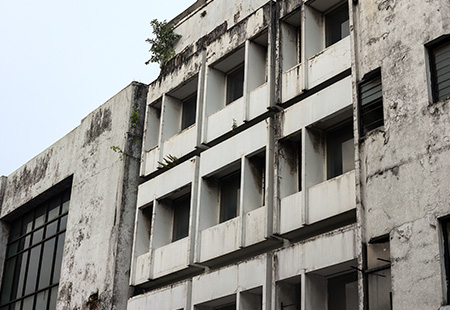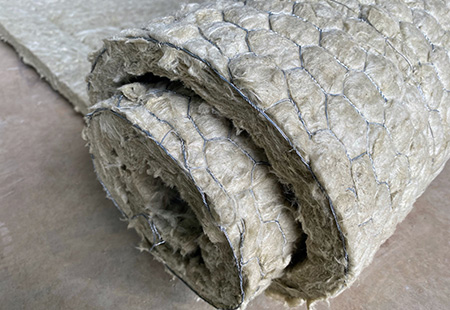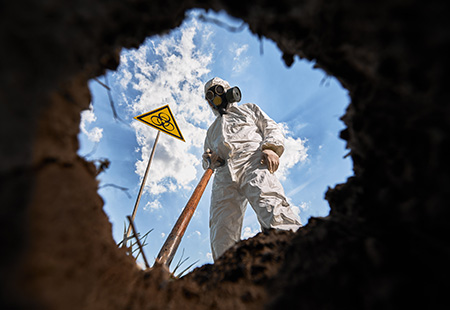Insulation plays an important role in your home and in plenty of other types of buildings. By adding a layer of insulation between the inside of the building and the outside, the warm and cold air won’t be exchanged as easily, and the temperature of the air inside the building will be easier to control. Unfortunately, asbestos was once used in the manufacturing of insulation, which resulted in health problems for countless people.
Buildings constructed more recently will likely feature cellulose insulation rather than asbestos, but it can be hard to tell the difference. Since asbestos insulation poses a serious health risk, it’s important to determine how to tell the two apart.
Understanding the Threat
When trying to figure out how dangerous asbestos insulation is in a given setting, it helps to understand what it is that makes asbestos dangerous in the first place. If asbestos insulation is simply sitting in the walls and not being disturbed, it isn’t going to pose much of a risk in that state. The threat that asbestos poses comes in when it is disturbed and distributed into the air. Since these fibers are microscopic in size, it’s impossible to tell if asbestos is floating around in the room – but you could be breathing it in and putting your health at risk.
Asbestos insulation is one of the most common asbestos construction materials still lingering in houses, apartments and other buildings.
So, the answer to the question of how dangerous asbestos insulation is comes back to how likely that insulation is to be distributed in the air throughout a building.
Asbestos fibers can become airborne (and dangerous) during renovation and demolition.
For example, when an old home is renovated, walls may be taken out and the insulation will be pulled out and replaced. If it is asbestos insulation, countless tiny little fibers will be spread throughout the building, and anyone working or living in the space will be at risk.
Even moving things around or pulling on or disturbing walls and damaged areas in an attic or basement space could create a dangerous situation if there is asbestos present.
!
If you may have been exposed to asbestos, speak with your healthcare provider about tests and screening to help detect the presence of asbestos fibers and asbestos-related diseases.
Looking for Signs of Trouble
If you are looking at insulation in an older building and are concerned about the possibility that it contains asbestos, there are some signs to look for that should lead you to investigate further.
  | Timeline. The history of the building will be a strong clue as to whether asbestos is likely. If the building was constructed prior to the 1970s, there is a good chance that asbestos will be present. Once the building date moves up into the 1980s, the odds start to go down significantly, and a building constructed in the late-1980s should be free from this mineral. |
  | Appearance. If the insulation you are looking at appears to be shredded pieces of paper, you are probably dealing with cellulose insulation and not asbestos. This would be good news, of course, as cellulose insulation is not a threat. However, asbestos insulation can have a similar fluffy appearance, so be sure that you see evidence of paper materials in the insulation. |
  | Use a Pro. When in doubt, turn to professional testing to be sure that you have come to the right conclusion regarding the status of your insulation. Professional testing can truly put your mind at ease and ensure that you take the right course of action. And a professional opinion that your property is asbestos free is more likely to prevent legal liability than any do-it-yourself remedies. |


Many industrial workers in factories, refineries, mechanical shops, metalworks and shipyards were exposed before the mid-1980s.
“It seems the dirtier the job, the more asbestos you were exposed to.”
The latency of asbestos exposure
Asbestos diseases have a long latency, meaning you won’t know whether you have an asbestos-related disease until twenty to even fifty years after you were first exposed.
In many cases workers who tested negative for asbestos damage in the 1990s eventually developed asbestosis, mesothelioma and other asbestos-related diseases.
Asbestos is a slow and silent killer.
Asbestos also has no taste, smell or immediate reaction, so you don’t always know you’re breathing it. But some asbestos fibers never leave your body.1
“All forms of asbestos are carcinogenic to humans.”2
Through a process known as epigenetics, asbestos fibers appear to affect and alter a person’s genes in a way that increases the risk of developing cancerous tumors.3
Second-hand asbestos exposure
Unfortunately, many of their families and other household members were exposed as well, as asbestos was brought home daily in neighborhoods across the U.S. on work-clothing. This is often known as secondary or second-hand asbestos exposure (or domestic / household family asbestos exposure).
20%
In studies of asbestos disease, 1 in 5 cases of asbestos exposure were caused by secondary asbestos exposure.4
AsbestosClaims.Law
AsbestosClaims.law is your comprehensive resource for all things asbestos. We hope this information helps you.
If you have any additional questions or concerns related to asbestos, check out our website and YouTube page for videos, infographics and answers to your questions about asbestos, including health and safety, asbestos testing, removing asbestos from your home and building, and legal information about compensation for asbestos injuries.
If you believe that your home or other building was contaminated with asbestos, you could be entitled to significant compensation—money you could use to cover the costs of asbestos removal services, pay for medical treatment, and preemptively protect your physical well-being.
All without filing a lawsuit.
If you’d like help with filing a claim, please get in touch by email at [email protected], or call or text us at (833) 4-ASBESTOS (427-2378) or (206) 455-9190. We’ll listen to your story and explain your options. And we never charge for anything unless you receive money in your pocket.
In addition to legal claims, veterans disability, social security and employment protection like workers compensation, FELA and The Jones Act for maritime workers, there are asbestos trusts that have been set up to compensate those harmed by asbestos without having to file a lawsuit.
If you have any additional questions or concerns related to asbestos, including testing for exposure or how to file a claim, please get in touch by email at [email protected], or call or text us at (833) 4-ASBESTOS (427-2378) or (206) 455-9190.
1 https://www.lung.org/clean-air/at-home/indoor-air-pollutants/asbestos
2 https://europepmc.org/books/nbk304375
3 https://www.ncbi.nlm.nih.gov/pmc/articles/PMC6955579/
4 Tompa E, Kalcevich C, McLeod C, Lebeau M, Song C, McLeod K, et al. The economic burden of lung cancer and mesothelioma due to occupational and para-occupational asbestos exposure. Occup Environ Med 2017; 74: 816-22.




